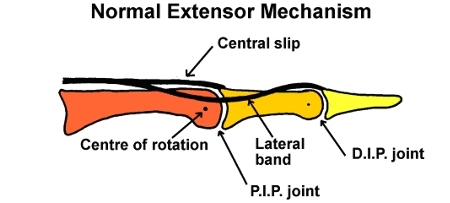Anatomy
The extensor tendon mechanism on the back (Dorsal side) of a finger is an extremely delicate & complex structure.
The tendon divides into 3 slips or bands, which insert onto different bones in the finger. There are
2 lateral bands & 1 central slip. Because the bands lie above the centre of rotation of both joints
they act to extend or straighten the finger.
Tendons on the front ( Volar Side) of the finger are benders ( Flexors) of the finger.
Injury
A Boutonniere (or Buttonhole) deformity arises when there is a rupture of the central slip of the extensor
mechanism. This is an uncommon sporting injury usually due to an end on injury to the finger with
sudden bending at the P.I.P. joint (often in football or basketball).
Deformity
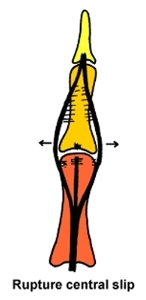
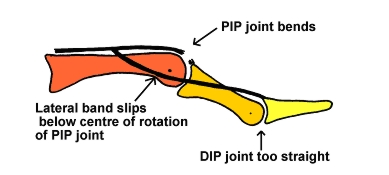
Central slip rupture may result in the gradual development of bending at the PIP joint & over-
straightening at the DIP or end joint of the finger. When one tries to make a fist the D.I.P.
joint does not bend normally.
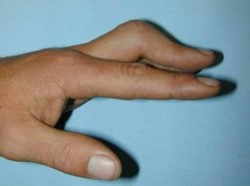
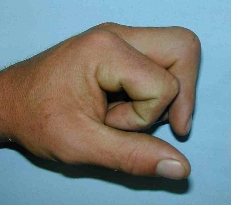
The typical deformity may not come on straight away & so it is quite frequent that the severity of
the injury is not initially recognised. The lateral bands gradually slide sideways around the finger.
When they pass the centre of rotation of the PIP joint they act to bend this joint rather than
straighten it. If the deformity is present for some time this bend may become fixed (hence more difficult to correct).
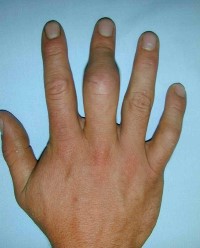
An understanding of the development of the deformity is critical in understanding the treatment
required.
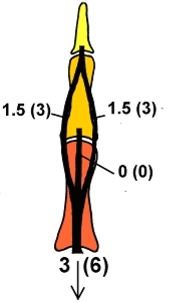
Normally the extensor tendon straightens the finger. If there is a central slip rupture no force
passes through the central slip no matter how hard the muscle contracts. In an attempt to
straighten the PIP joint increasing force is exerted through the lateral bands & the DIP joint
over-straightens.
Treatment Rationale
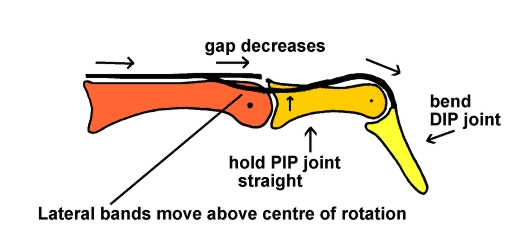
Treatment
1. Achieve full straightening at PIP joint. This requires prolonged stretching. Care should be taken
while doing this to avoid applying force across the DIP joint - this will only make the deformity worse.
2. Bend the DIP joint while holding the PIP joint straight. This has 2 effects. It regains movement
at the DIP joint. It also acts to centralise the Lateral bands. In so doing it drives the lateral bands
above the centre of rotation of the PIP joint & turns the lateral bands into straighteners rather
than benders of this joint.
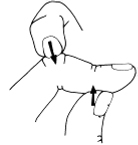
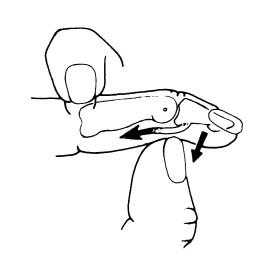
3. Allow the central slip to heal. This requires a period of splintage with the finger held completely
straight for 3 -6 weeks & then a variable period of dynamic splintage (using a Capener splint) for
up to 3 months.
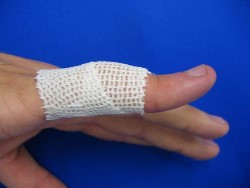
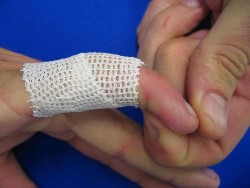
During this period you will require regular review by the hand therapist who makes these splints.
4. Surgery is occasionally required to correct the deformity (especially if long-standing deformity).
Due to the delicate nature of the extensor mechanism stiffness following surgery is a problem.
LAST UPDATED ON SATURDAY, 27 February 2015

